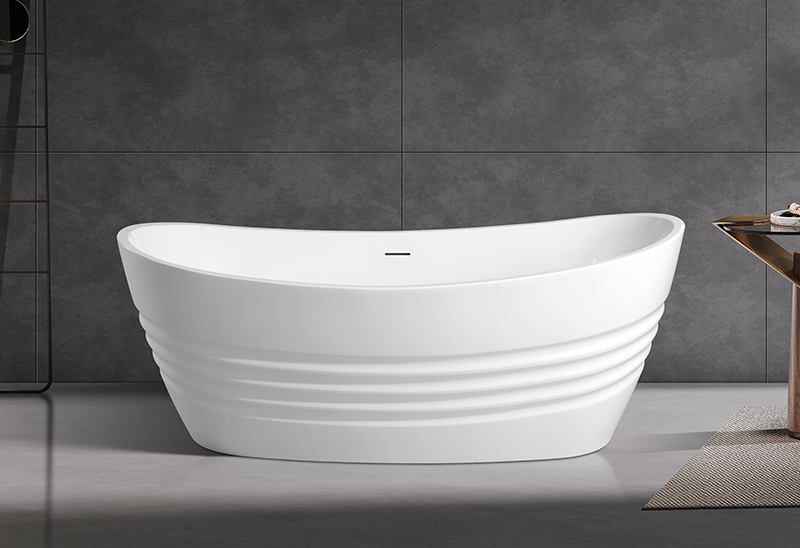A1800F 4/5/6mm Glass Sliding Door Square Shower Enclosure
Model:A1800F 80X80X185(cm)90X90X185(cm)100X100X185...
Drop-in bathtubs can be challenging for individuals with mobility issues, but there are ways to enhance their accessibility. Here's a detailed look at the accessibility aspects and potential solutions:
Accessibility Challenges:
High Sides:
The high sides of drop-in bathtubs can make it difficult for individuals with mobility issues to step over and into the tub.
Low Seating:
Getting up from a low position within the tub can be challenging, especially for those with limited strength or flexibility.
Slippery Surfaces:
Wet surfaces can be slippery, increasing the risk of falls when getting in or out of the tub.
Enhancing Accessibility:
Grab Bars and Handrails:

Installing grab bars and handrails around the bathtub area provides support and stability for individuals when entering and exiting the tub.
Non-Slip Surfaces:
Adding non-slip surfaces or mats within the bathtub reduces the risk of slipping. Many modern tubs come with textured bottoms designed to prevent slips.
Built-In Seats and Benches:
Some drop-in bathtubs include built-in seats or benches, allowing users to sit while bathing. These can be particularly helpful for those who cannot stand for long periods.
Step-Through Inserts or Walk-In Conversion Kits:
Converting a traditional drop-in bathtub into a walk-in tub with a door can significantly improve accessibility. These kits usually involve installing a watertight door, reducing the need to step over high sides.
Bath Lifts:
Bath lifts are mechanical devices that can lower and raise a person in and out of the bathtub. They are especially useful for individuals with severe mobility issues.
Handheld Showerheads:
Installing a handheld showerhead allows individuals to bathe while seated, providing greater control and reducing the need to move around excessively.
Lowered Tub Height:
Choosing a drop-in bathtub with a lower side height can make it easier to enter and exit the tub, though this may limit the depth of the bath.
Transfer Benches:
Transfer benches allow individuals to sit on the bench outside the tub and slide over into the tub, reducing the need to lift their legs over the side.
Anti-Scald Valves:
Installing anti-scald valves can prevent sudden temperature changes, reducing the risk of burns, which is crucial for those with slower reaction times.
Custom Surround Design:
Designing the surround area to include steps or ramps can provide easier access. Ensure these features are non-slip and equipped with handrails for safety.
Considerations for Installation:
Professional Assessment:
Consulting with an occupational therapist or accessibility specialist can provide personalized recommendations based on the individual's specific needs and abilities.
Code Compliance:
Ensuring that all modifications comply with local building codes and accessibility standards (such as ADA guidelines in the U.S.) is important for safety and legality.
Durability and Maintenance:
Choosing materials that are durable and easy to maintain ensures the modifications remain effective and safe over time.
Alternatives:
Walk-In Tubs:
Consider installing a walk-in bathtub specifically designed for accessibility. These tubs come with doors, built-in seats, and other features tailored for individuals with mobility issues.
Roll-In Showers:
For those with significant mobility challenges, a roll-in shower might be a better option. These showers are designed for easy wheelchair access and typically include built-in seating and handrails.
By incorporating these features and considerations, drop-in bathtubs can be made more accessible and safer for individuals with mobility issues, allowing them to maintain independence and enjoy bathing comfortably.

Model:A1800F 80X80X185(cm)90X90X185(cm)100X100X185...

Model:A1800K-F 70X70X185(cm)80X80X185(cm)90X90X185...
.jpg)
Model:MV-X193 Dimention:1600*200(mm) Material:Stai...

Model:MV-G8001 Dimention::1250X150(mm) 1500*200(mm...

Model:MV-G888 Dimension:1250X150(mm) 1500X200(mm) ...

Model:MV-G876 Dimention:1500X200(mm) Material:Stai...

Model: A2721 80*80*190(cm) 90*90*190(cm) Profile m...

Model:MV103D White Dimension: 67X31.5X26.8 inch / ...